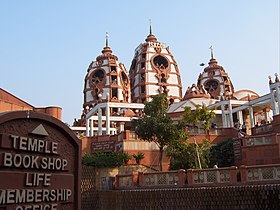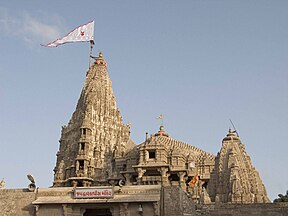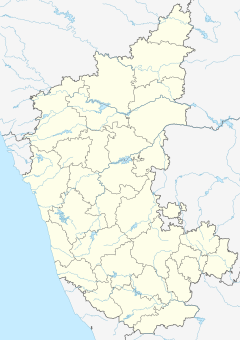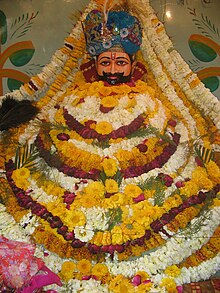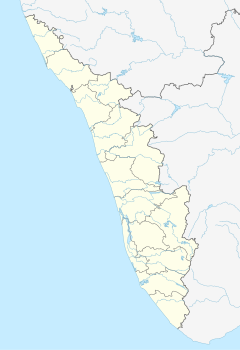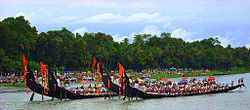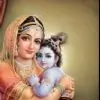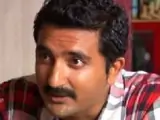I thought we should discuss about various temples dedicated to Lord Krishna in India and worldwide. It will be really intertesting to share spiritual facts with each other. And Mahabharat is all about the teachings of geeta and Krishna. Geeta teaches us the way of life something to take away from this wonderful epic.
So lets dedicate this thread to the various temples glorifying lord krishna.
Let me begin with Mathura Temple where lord krishna was born:
| Keshav Dev Temple |
|---|
 |

Krishna Janmasthan, or Kesava Deo Temple is a temple in Mathura, India and is among the sacred of Hindu sites as it is birthplace of Lord Krishna. The Keshav Dev Temple is a Hindu temple situated besides the main Krishnajanmabhoomi complex, the birthplace of Lord Krishna in Mathura, India. Kehsav Dev (Krishna) is the deity of this temple. According to traditions the original deity was installed by Bajranabh, who was great-grandson of Krishna.
This temple still carries the local touch and feel of the several other temples in the twin towns of Mathura and Vrindaban. After 1992 Ayodhya situation, when security was enhanced at the main Krishnajanmabhoomi complex, this temple is slowly becoming the de-facto krishna temple for localites, in addition to the older Dwarikadheesh temple in the old town. This temple holds its own festival calendar, and hosts nearly all of the hindu functions within its own premises independently. The adjacent residential areas of mallapura, Govind Nagar, JagannathPuri are the main feeder for many of the festivals. It holds its own "lathamar holi", "chhappan bhog", "Krishna Janmashtami" among other festivals. Most of the festivals here are in sync with calendar followed in temples of Goverdhan, and out of sync with the main Krishnajanmabhoomi complex.
| The history of Mathura dates back to 'Treta-Yuga,', which is earlier than the times of Lord Shri Krishna of 'Dwapara-Yuga'. According to the Puranas, Shatrughana, the younger brother of Lord Shri Rama, killed a demon named Lavana and established a town called 'Madhura'. 'Madhura came to be known as Mathura over time, where Shri Krishna would manifest Himself in the prison cell of the tyrant king Kansa. |
| Ancient relics found in Katra Keshavadeva and the researches of foreign and Indian scholars indicate that numerous grand and magnificient temples were constructed here from time to time. It is certain that an earlier shrine or series of shrines, on the same site and under the same dedication, had been famous for many ages. But, while most of them were destroyed by the ravages of time, the rest were ruined by the onslaughts of persons owing allegiance to a different religion. Not even a single temple could be saved. |
According to the epics and folklore prevailing in the local area, the first temple was constructed on this spot by Vajranabha, the great grandson of Lord Shri Krishna, in memory of his family deity. A stone inscription in Brahmi script shows that in the reign of Shodasa, an individual named Vasu had a temple, an arched doorway and an altar constructed at the birthplace of Shri Krishna. |
The next big temple was constructed here during the reign of Gupta Emperor, Chandragupta Vikramaditya in 400 A.D. Mathura was then a flourishing city, where Hinduism, Buddhism and Jainism were held in high esteem. Close to the site of Janmasthan, Buddha Viharas and Jain temples were also in existence. From the remains of these, it has been established that the followers of Buddhism and Jainism had great regard for the birthplace of Lord Krishna. In 1017 A.D., the magnificent temple that had been built by Emperor Chandragupta Vikramaditya, was destroyed by Mahmud Ghaznavi. Mahmud Ghaznavi's scribe, Mir Munshi Al Utvi, described the grandeur of the temple and the beauty of Mathura of those times in his 'Tarikhe Yamini' thus: "In the centre of the city there was a huge and magnificent temple, which the people believed wasn't built by human beings but by the angels. Any description of the temple, either in words or in pictures, would fall short and fail to convey its beauty." After seeing the temple for himself, the Sultan Mahmud said that if any one wished to construct a building equal to it, he would not be able to do so without spending a hundred million dinars, and the work would occupy two hundred years, even though the most able and experienced workmen were employed. |
A Sanskrit inscription incised on a stone slab was found in Katra Keshavadeva, which mentions that in Vikrama Samvat 1207 (1150 A.D.), when Maharaja Vijayapal Deva was the ruler of Mathura, an individual by the name of Jajja constructed a new temple on the site of Shri Krishna's birthplace. Shri Chaitanya Mahaprabhu came to Mathura and bathed at the Vishraam Teertha. Then he prayed and paid obeisance to the Lord at the Keshavadeva temple at Shri Krishna's birthplace. Imbued with his love for Lord Shri Krishna, Shri Chaitanya Mahaprabhu began to dance, sing and cry out the name of the Lord. People were mesmerised by his acts of divine love and began to chant, "Hari-Hari" along with him. The priest of the Keshavadeva temple garlanded Shri Chaitanya. Shri Chaitanya returned to Mathura after a visit to Gokul and paid obeisance to the Lord at His birthplace. He stayed at the house of the priest. This grand temple was destroyed in the early sixteenth century during the reign of Sikandar Lodi. |
About 125 years later, during the reign of Jahangir, Raja Veer Singh Deva Bundela of Orchha constructed another magnificent temple (about 250 feet high) on the sacred spot at a cost of Rs. 33 Lakhs. A fortified boundary wall was also erected around it. A part of this wall exists even now. In the south-eastern corner of the compound, a large well with a tall tower was built up. The water of that well was lifted to a height of about 50 feet and was used to feed the fountains in the quadrangle of the temple. The well and the tower are extant today. According to Tavernier, a French traveller who visited Mathura in about 1650 A.D., "after Banaras, the most famous temple of India is situated at Mathura. It is octagonal in shape. Red sandstone has been used in it. All round the temple, the stone claddings have inscriptions of various kinds of animals. The Jagmohana is built upon one half of the temple's vast courtyard. At the centre is the main Mandap. The temple has many windows and is so vast that it can be seen from a distance of 5 to 6 Kosas." From the descriptions of the Italian traveller, Manuchi, it is clear that the gold canopied top of the temple could be seen even from Agra, which is at a distance of 18 Kosas (54 Kilometres). When lamps were lit on the Deepavali night, the light could be easily seen by the Emperor from Agra. Manuchi stayed in India for a long time and had the opportunity to see the temple several times. |
Emperor Aurangzeb could not tolerate this sacred memorial, the fourth one at the birthplace of Lord Shri Krishna. So, in 1669 A.D., he had the Keshavadeva temple destroyed. Over a part of the raised plinth of the temple an ldgah was erected. Materials from the temple were utilised in the construction of the ldgah, which are still in existence. The visitors and devotees from India and abroad who came to see the temple's plight, felt deeply hurt and always hoped the temple would be rebuilt and its past glory restored. |
In 1803, the Mathura region came under British rule. In 1815, the East India Company auctioned the area of Katra Keshavadeva, which was purchased by the then Raja Patnimal of Banaras. It was the earnest desire of Raja Patnimal that the Lord Keshavadeva temple should be rebuilt on the site of His birth. But his wish could not be fulfilled. His family heirs, however continued to have the ownership rights over Katra Keshavadeva. The Muslims of Mathura challenged the right of Raj Krishna Das, the owner of Katra, twice in civil suits. In both the cases, the Allahabad High Court ruling was that Raj Krishna Das was the real owner of the Katra Keshavadeva. |
The Late Mahamana Pandit Madan Mohan Malaviya felt utterly distressed to see the miserable condition of this historical and sacred site. He started making plans for restoration of the shrine. With financial assistance from the Late Seth Jugal Kishoreji Birla, Pt. Madan Mohan Malaviya acquired the entire land from Raj Krishna Das on 7th February, 1944 at a small sum of Rs. 13,000/-. This amount does not account for the real value of the sacred land, but the expenses incurred for fighting the case at various levels by Late Shri Kailash Nath Kataju. After these cases were won, Shri Madan Mohan Chaturvedi of Mathura made commendable efforts in restoring this sacred land to its rightful owner, Raj Krishna Das. However, Malaviyaji could not fulfill his wish during his life time. Before his death, he expressed touching sentiments and a strong desire for early completion of Lord Shri Krishna's memorial at the place of his birth. In order to fulfill the last wishes of the Late Malaviyaji, the Late Seth Jugal Kishorji Birla, on February 21, 1951, constituted a trust named 'Shri Krishna Janma Bhoomi Trust' and acquired the ownership rights over Katra Keshavadeva. Subsequently, the Trust was registered as a society, 'Shri Krishna Janmasthan Seva Sansthan.' On observing the earnest devotion of Shri Jaidayalji Dalmia towards Lord Krishna and the sacred land of Braja, Devout entrepreneur Shri Jugalkishoreji Birla handed over the responsibility of development and construction of various temples to be carried out in accordance to the magnitude mentioned on the sacred scripture (PURAN) Shri Jaidayalji Dalmia accepted this mammoth endeavor due to his earnest devotion towards Lord Shri Krishna and keenness towards Shri Birlaji and committed himself completely throughtout his life. It was due to the tireless efforts of Shri Jaidayalji Dalmia that a glorious initiation of the construction work at the Shri Krishna Janmasthan took place. Whether it is the beautification of the Keshavdev Temple or Garbha-Griha or the divine construction work of Shri Bhagwat Bhawan amongst many others, Shri Jaidayalji Dalmia was closely involved with each of these developments at this foremost sacred place. A substantial amount has been contriubuted by India's renowned industrialist family, the Dalmia Group towards the construction, maintenance and adornment at this holy place. After the departure of Shri Jaidayalji Dalmia to Goloka, his eminent son Shri Vishnuhariji Dalmia guides the many services that are being rendered for development of the divine premise by the Sansthan. At present Shri Anurag Dalmia is the Joint Managing Trustee of the Shri Krishna Janmasthan Seva Sansthan. The first chairman of the trust committee was the earstwhile member of Parliament (Lok Sabha), the Late Shri Ganesh Vasudev Mavalankar. After his demise, earstwhile member of Parliament (Lok Sabha) and ex-Governor of Bihar, Shri S. Anantashayanam Iyengar became the chairman of the Sansthan. Later, Swami Shri Akhandananda Saraswati and Shiromani Paramahansa Swami Vamdevji Maharaj became chairman of the Sansthan. At present, Mahant Nrityagopal Das Ji Maharaj holds the responsibility of chairmanship of the Sansthan. |
Under the chairmanship of the revered Swami Shri Akhandananda Saraswati, the then Vice President of the Trust, a group of enthusiastic young volunteers of Mathura started clearing the mounds and filling up the pits through Shram Daan on the auspicious day, 15th October, 1953. Later, the work continued for several years with great perseverence under the leadership of Shri Babulal Bajaj and Shri Phool Chand Khandelwal. Thus began the restoration and contruction of the prison cell and the magnificent Shri Krishna Janmasthan complex, which was completed in February 1982. |













